A luminaire that runs on plants and a device that allows you to feel music with your whole body – we tell you about interesting and technological design inventions that should make our lives richer and easier.
“Liquid” 3D Printing
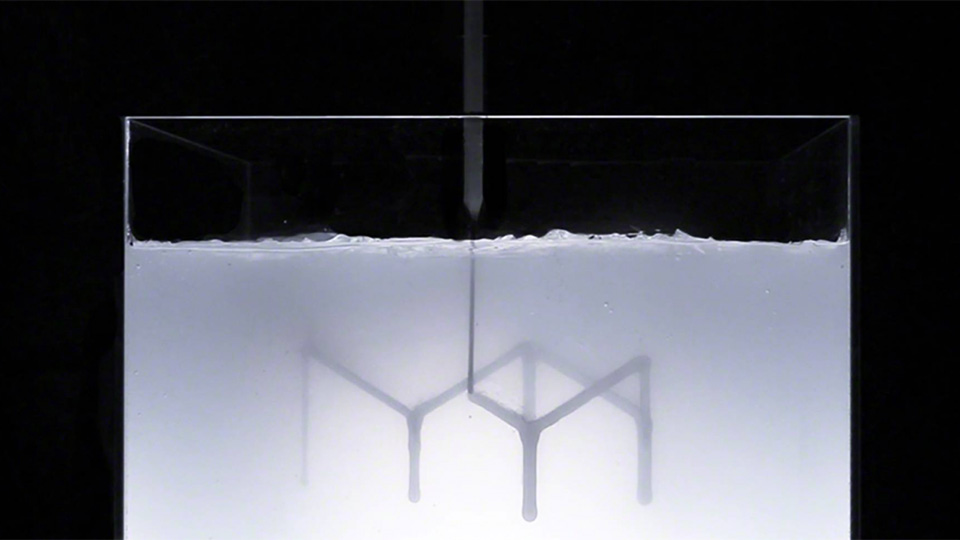
The development of a new 3D printing method Rapid Liquid Printing is an achievement of researchers at the Self-Assembly Lab at the Massachusetts Institute of Technology (MIT). It allows times shorter object formation time, and creates objects 25-100 times faster than with a conventional 3D printer. The object is “printed” in a container of translucent gel and hardens immediately. No additional processing (e.g. high temperatures) is required, and the finished product just needs to be taken out of the container and washed. The first public demonstration of the rapid printing technology took place at the Design Miami exhibition, where specialists of the Self-Assembly Lab printed bags for all comers – in a few minutes.
Smart Home Technologies
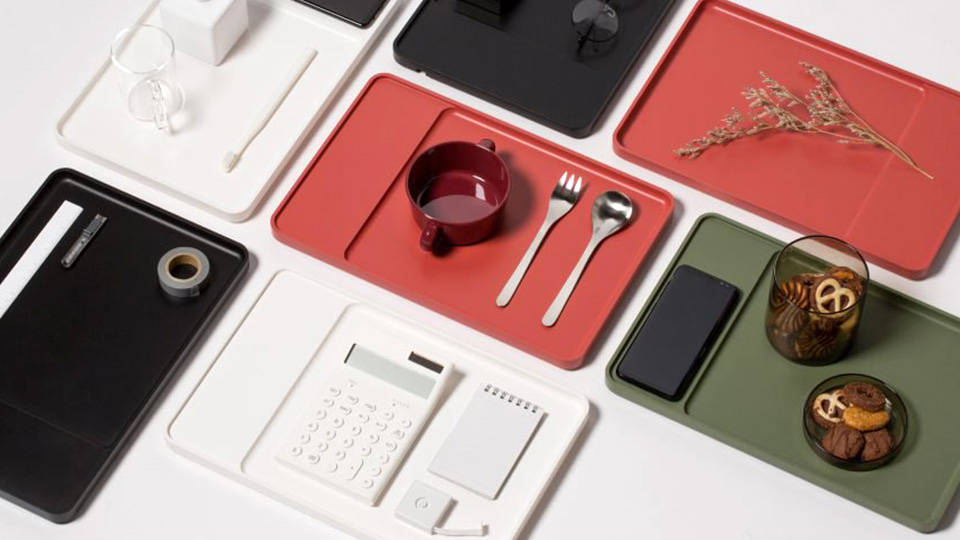
The introduction of “smart” technologies in everyday life in order to make it more comfortable and easier in a sense, determines our future. And while the authors of “Black Mirror” acquaint us with the undesirable scenarios of this trend, modern designers offer new solutions – with only good intentions. A series of “smart” items for the home “Creative Square” was developed jointly with the Korean design studio found / Founded by Samsung. It includes a pendant lamp with a video camera (they suggest using it for security purposes – in the hallway or children’s room), a table with an integrated sound system, a wireless “charger” in the form of a saucer for small things, and a mirror combined with a humidifier.
Another Samsung project, wireless chargers integrated into furniture, was developed together with the designers of the PESI studio. They developed two types of items: “Composition”, removable table tops that can be mounted on a leg (like a table) or can be integrated into a cabinet, and “On the surface”, a series of devices where the charging surface is integrated into a mirror, vase stand or clock. To charge a gadget, all you have to do is put it on the surface of the object.
Tapestry that receives a Wi-Fi signal
The “Work In Progress” thermochrome tapestry presented at Dutch Design Week doesn’t solve practical problems, but it opens the door to a future of wallpaper and textiles that can be connected to the Internet. The canvas is a colored plate of thermochromic yarn that graphically displays Wi-Fi signals emitted by gadgets. A controller connected to the tapestry converts the wireless signals into an electrical current, which is fed to the object through a series of wires. Thermal elements built into the tapestry transform the current into heat. The thermochromic threads react to these reactions and change the color of the fibers from blue to silver-white and vice versa.
Political lamp
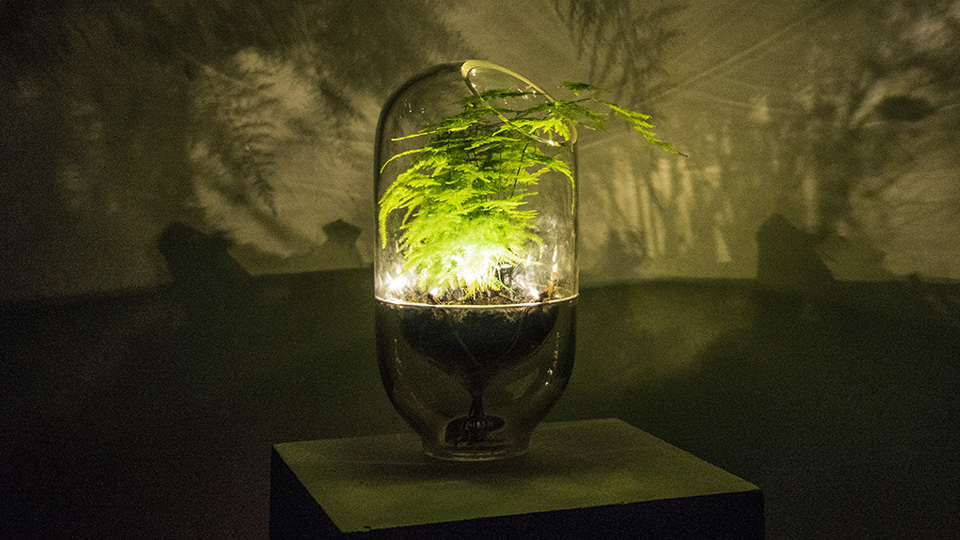
Not textiles, but objects that react to some kind of Internet activity already exist. For example, a French artist, who creates under the pseudonym Parse/Error, has created the “Political Lamp”, a glass vessel with a thundercloud inside that reacts to Donald Trump’s tweets. As soon as the politician leaves a message on his microblog, the lamp erupts with thunder and lightning.
A luminaire that charges from plants
Designer Ermi van Urs also unveiled her innovative object for the first time at Dutch Design Week. The lamp with the talking “Living Light” is powered by electricity, into which microorganisms convert the chemical energy that plants produce through photosynthesis. The lamp is completely self-sufficient and does not require recharging – the designer is already thinking about how to adapt this idea to provide energy for “smart cities. The technology, however, needs to be refined: so far, plants can only produce very little light.
Stickers to Feel the Music
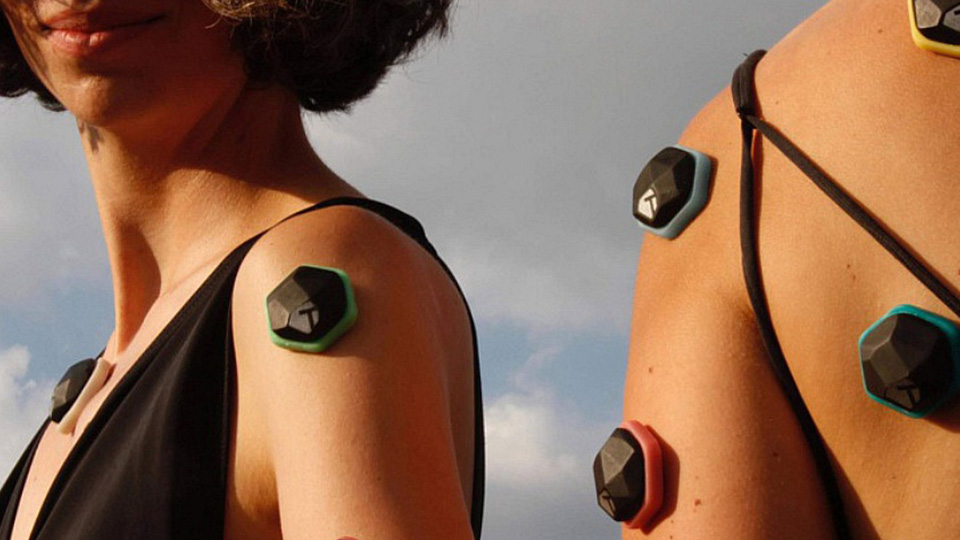
A fan of electronic music, Frenchwoman Marie Tricot has developed a mechanism that turns the sounds of melodies into streams of vibrations and temperature impulses that spread over the body. The Touché device consists of eight speaker stickers, which are attached to the skin, and a DJ remote control. By controlling the remote, you can change the frequency and strength of the vibrations of the “speakers”, as well as their temperature. The stickers can be used on any part of the body. The user can “create” their own songs by playing them back with vibrations, or they can listen to familiar music from playlists in a new sound – also with the help of vibrations.
Mini temperature controller
The device “Stratum” by young designer Tony Elkington is designed primarily for office workers – now they can rest from the eternal arguments about whether to turn on or off the air conditioner. Miniature device allows you to adjust the temperature mode at will of the owner, regardless of the neighbors in the office. It is enough to put the device on the table near the forearms and specify the desired temperature – when the hands get warm, the whole body will get warm, and the same is true when the temperature drops.
A device that “tastes” food
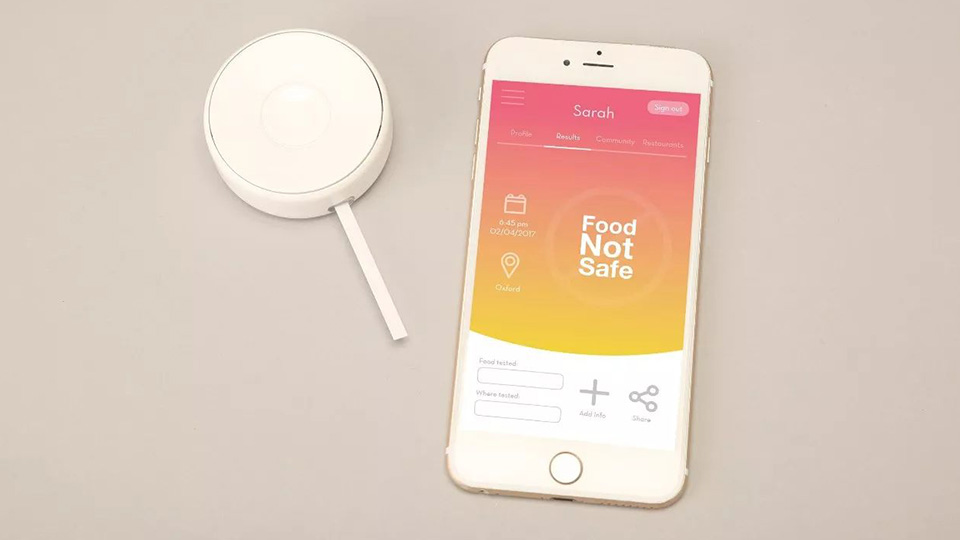
The polypropylene device “Ally” checks food for allergens, the prototype is aimed at recognizing lactose, but the designer, Brunel University graduate Imogen Adams, plans to expand the scanner’s functionality. To test food, you will have to break off a small piece and check it with a special indicator. In addition to the device, the designer has developed a mobile application with the same name. In it, you can share the results of your research and form, together with other users, a “correct” gastronomic map of the city.
